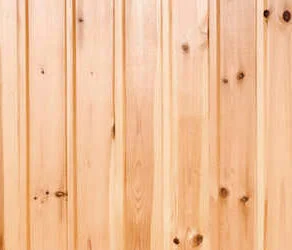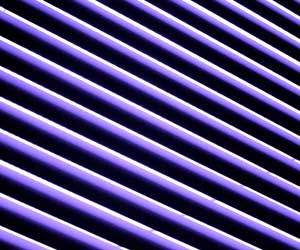Sandra asked: How do I remove hard water deposits from an ice dispenser. The plastic ice dispenser and plastic tray under it have hard water build-up. I have put white vinegar in the tray, and it takes it off, but the longer I have it, the quicker the build-up comes back. The dispenser is very dirty with build-up and I can’t remove it to soak it.
Removing  hard water deposits can be a tough job in areas that are difficult to reach. While vinegar is the preferred method, sometimes it requires something stronger. Since consumables are being dispensed, it is crucial that all traces of the cleaning product be cleaned away before using again.
hard water deposits can be a tough job in areas that are difficult to reach. While vinegar is the preferred method, sometimes it requires something stronger. Since consumables are being dispensed, it is crucial that all traces of the cleaning product be cleaned away before using again.
Vinegar Method
You Will Need:
- White vinegar
- Soft cloths
- Water
- Dish detergent
- Old toothbrush
Steps to Remove the Deposits:
- If this is the first time removing the deposits, begin with vinegar.
- Moisten a soft cloth with the vinegar and lay it on top of the affected area.
- Allow the cloth to lay on the deposits for several minutes. If the layers are thick, soaking for several hours may be necessary; apply more vinegar as needed to keep it from drying out.
- If it’s possible to soak the area in a cup or dish filled with vinegar, that is even better.
- After the area has soaked, gently scrub away the loosened deposits. Use an old tooth brush dipped in vinegar for additional scrubbing. (Electric toothbrushes will make the job even easier.)
- When the deposits are removed, rinse the area with a clean cloth moistened with water to remove any remaining vinegar.
Using Chemicals to Remove the Deposits
You Will Need:
- Lime Away or other limescale remover
- Soft cloths
- Water
- Dish detergent
- Old toothbrush
- Cotton swab
Steps to Remove the Deposits:
- If the deposits are difficult and vinegar does not work to remove them, it may be necessary to resort to the power of chemical cleaners. Use common sense when using these, especially since we are cleaning an area that dispenses something that will be consumed. Efforts and precautions should be taken to use minimal cleaning solution and clean the area well to ensure no chemicals are left behind.
- Use a cotton swab for small areas or a soft cloth for larger areas, and apply a small amount of the lime remover to the affected areas.
- Allow it to set for the recommended time, typically several minutes up to an hour.
- Next, wipe the deposits and chemicals away with a clean, soft cloth.
- Use an old toothbrush to scrub the more stubborn areas. Add a small amount of additional cleaner if needed.
- Rinse the area thoroughly with warm water and clean cloths.
- Mix a small amount of dish detergent with water.
- Moisten a soft cloth with the water and wipe the entire area down to remove any remaining chemicals.
- Repeat if needed.
- Rinse thoroughly with water.
- Allow the dispenser to run briefly to remove any soap or chemicals that may have been pushed up into the dispenser itself.
- Once you are sure that all of the chemicals have been removed, it is safe to use the dispenser again.
Additional Tips and Advice
- One way to battle hard water stains throughout your home is to invest in a water softener or water conditioner. These units can be expensive, but well worth the price.
- Electric toothbrushes or cleaning tools, such as the Sonic Scrubber, help to make scrubbing small areas much easier and more efficient.









I’ve never met a hard water buildup that vinegar didn’t handle. And I have seriously hard water. The trick? Time. Tough deposits might require an overnight soak, but vinegar will do the trick. For hard to soak places, I moisten a Kleenex with vinegar, carefully layer it snugly on top of or around the deposit area. Re-moisten the tissue with vinegar (I keep some in a spray bottle for just such purposes) periodically. After an hour or more, scrub with a toothbrush and reapply tissue and respray to battle remaining deposit. It takes time, but little elbow grease, hardly any money and it’s convenient.
I tried the vinegar method and it worked pretty good, but I still had tough stains. I found another website that recommended LEMON JUICE – voila! Done deal! Now I am using the lemon juice on my granite around the water faucets, soaking with a lemon juice-soaked paper towel. I also used an old toothbrush, which was helpful to move the process along.
Be careful with acidic things like vinegar and lemon juice around granite and marble. They can etch or discolor the surface. I know from experience.
I have a ice machine that makes ice cubes in the top of ice maker. I can’t get my hands in there. Show me the best way to clean this.
Hi Benton,
There are several things you can try. First, check the manual for your fridge to see if the cover of the ice maker can be removed. If not, there are a few other things you can try. If you unplug your fridge and allow the freezer to thaw, you can pour some water into the ice maker (don’t use soap) to rinse out any debris or dust that may have gotten in there and be changing the flavor of your ice (Also be sure to clean the freezer fan, which can affect the flavor of the ice). If it needs a scrub, there are bendable bottle brushes that can be ordered online that may work, or you can wrap a hand towel around a yardstick (use rubber bands to hold it in place) and that can work instead. Be sure to empty the water out of the ice maker and allow it to dry fully before turning the fridge back on. Good luck!
I’ve tried LimeAway on the plastic water dispenser in the front of the fridge door. It tends to be corrosive on plastic and only partially removed the calcium buildup. My fridge is black so the deposits really show up. I was ready to have the part replaced, but it is no longer available by Whirlpool. I’m tired of looking at it. What might really work?
Hi Delores,
Limescale can be one of the worst things to combat. Most people report that it’s a try-try-again process. You can try another round with the LimeAway, another option is CLR, or you can try white vinegar. Bar Keepers Friend can also work. If you’re really determined, HG Professional Limescale Remover from the UK has excellent results. You can order it through Amazon to the US for about $20 including shipping here. Another option is to search for the part on ebay or other places online. Good luck!